These are some of the documents used for this month’s essay and story. As can be seen, some are easier to approach than others. Whether it be style of calligraphy, or condition of the document, there are different challenges to each. I wanted to post to give an idea of what these documents look like, and to share their unique beauty. Each a record of not only the matters written on them, but also of the hand that penned the ink.
In 1575, Don Gaspare the abbot, sues to the ‘Camera Summaria’ to take possession of a property that he complained he had ‘decime’ rights to.

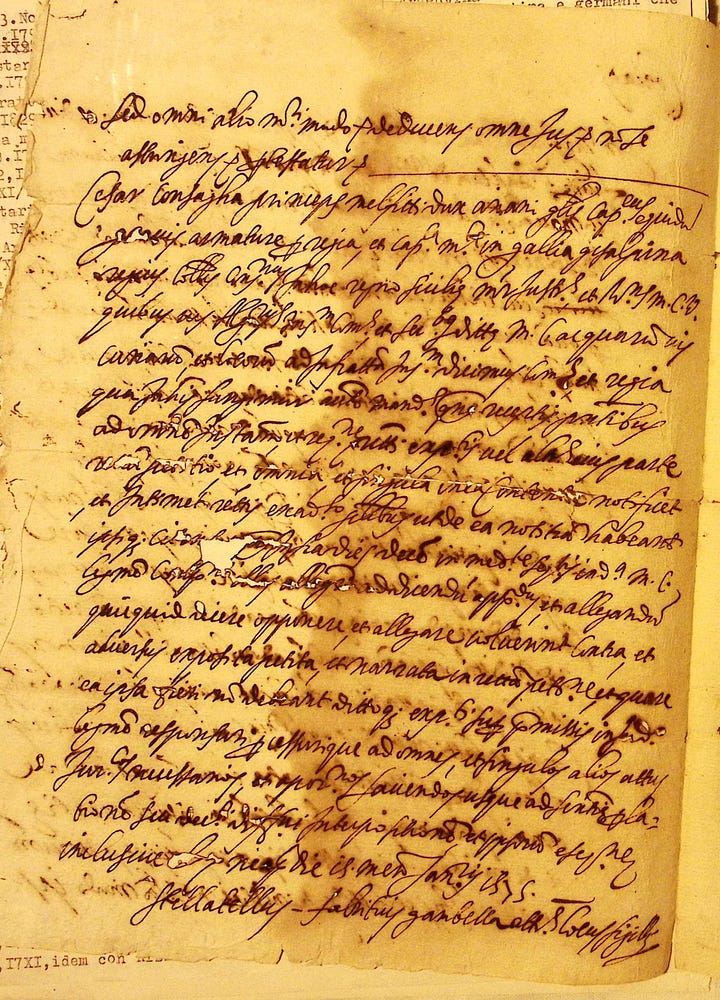
Document for 1575 purchase of additional parcel of masseria ‘Lama delli Gatti’.
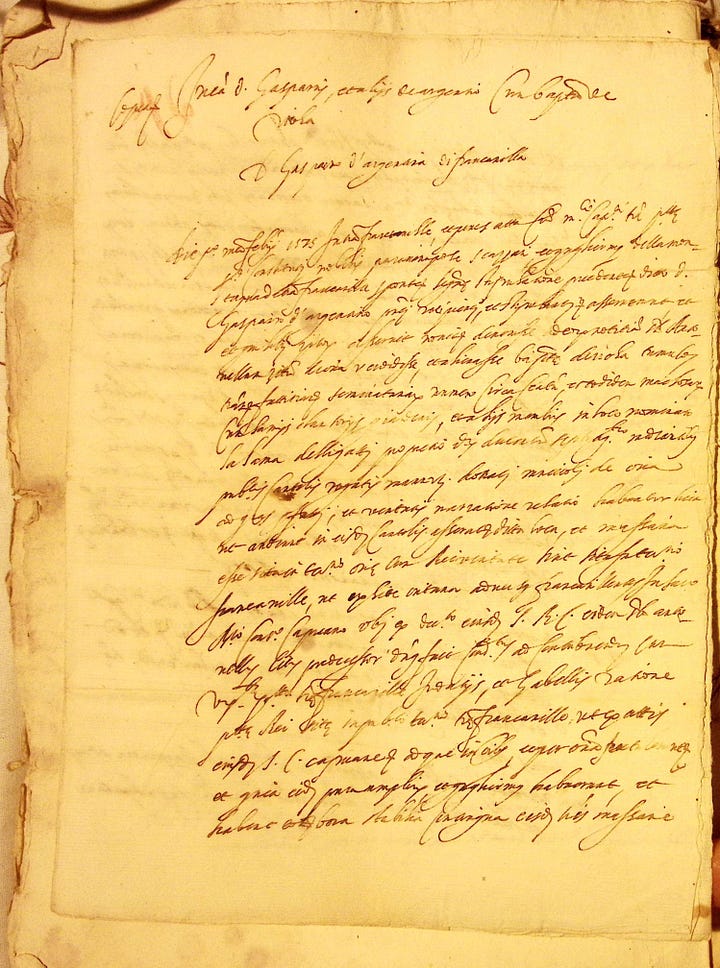
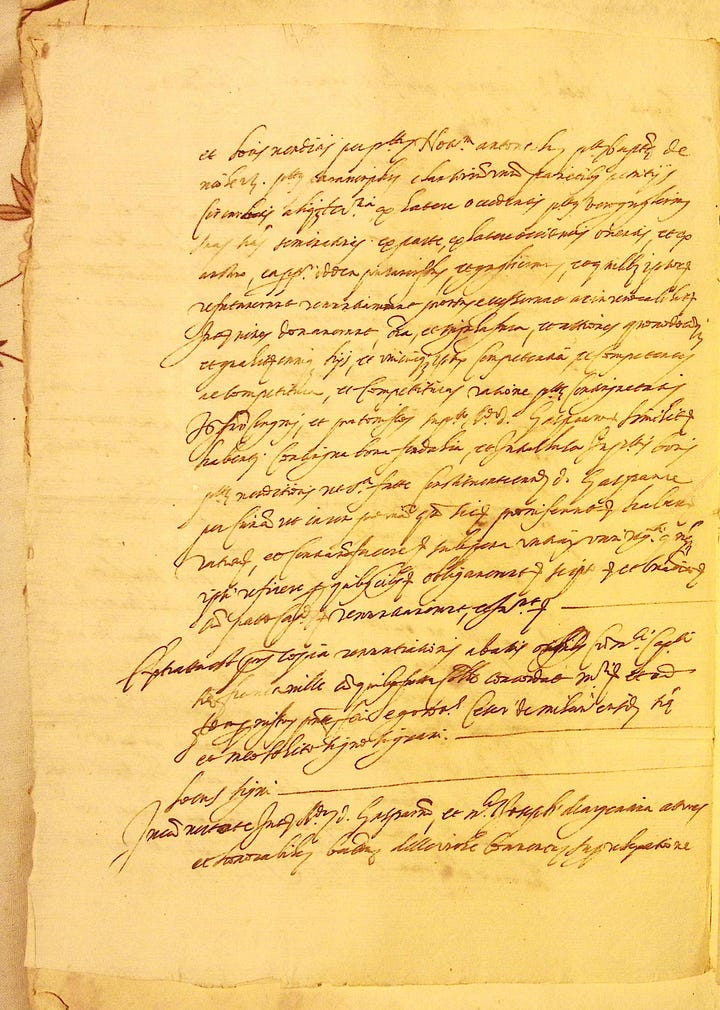
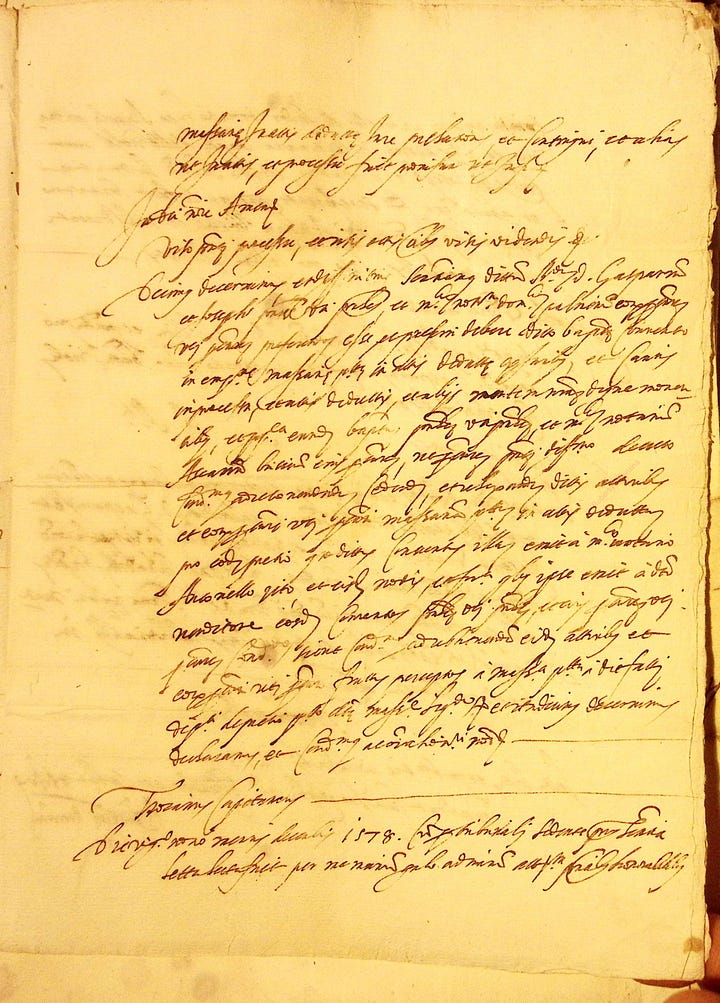
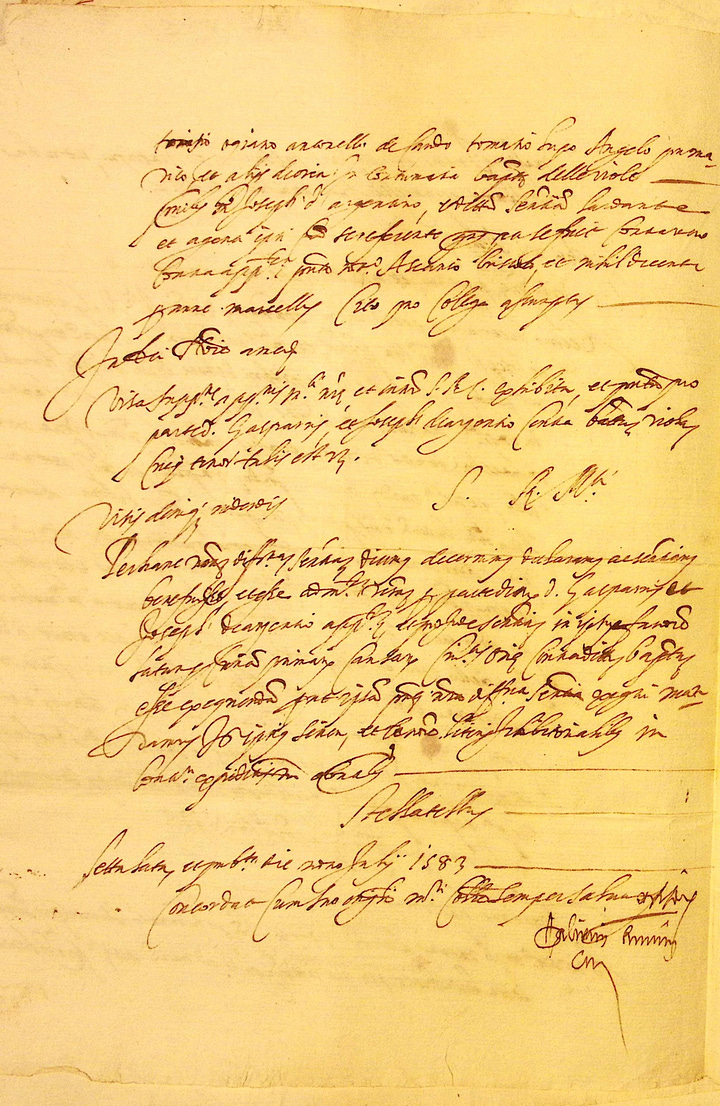
Document for 1585 certification of Argentina feudal properties between Don Gaspare and his nephew Josephi.
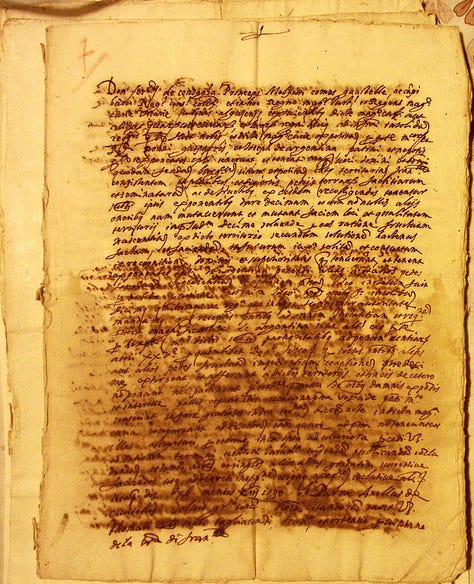

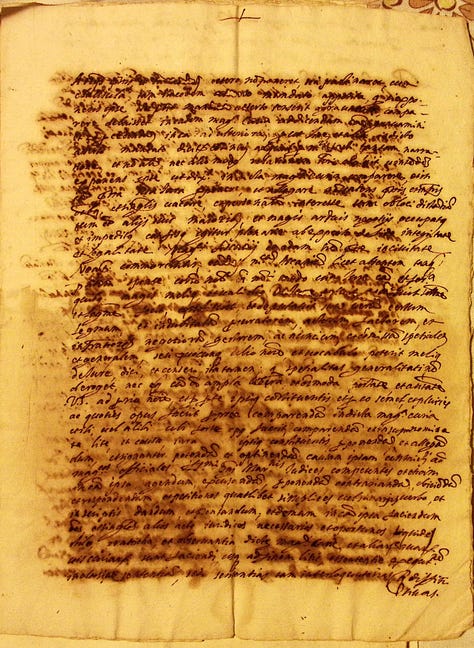
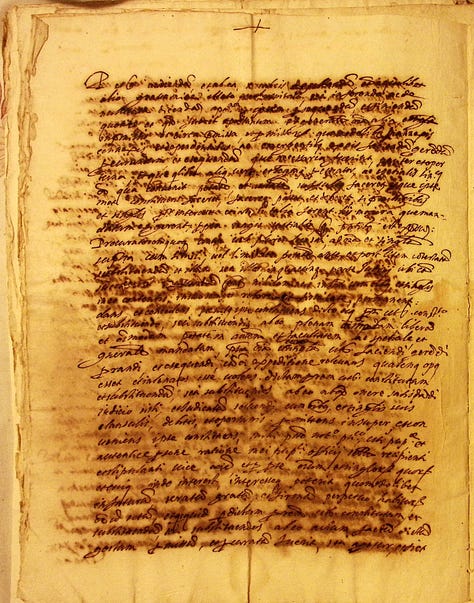
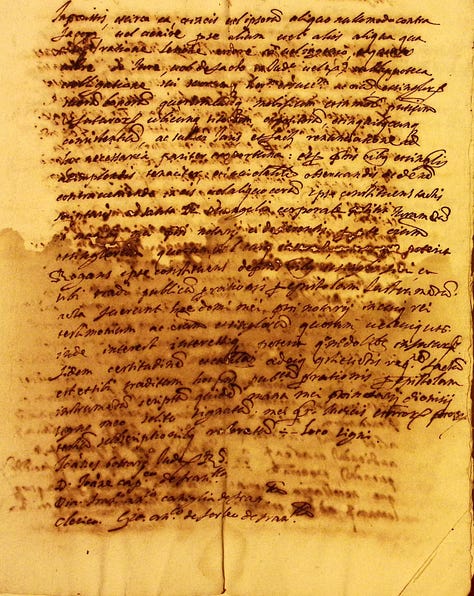

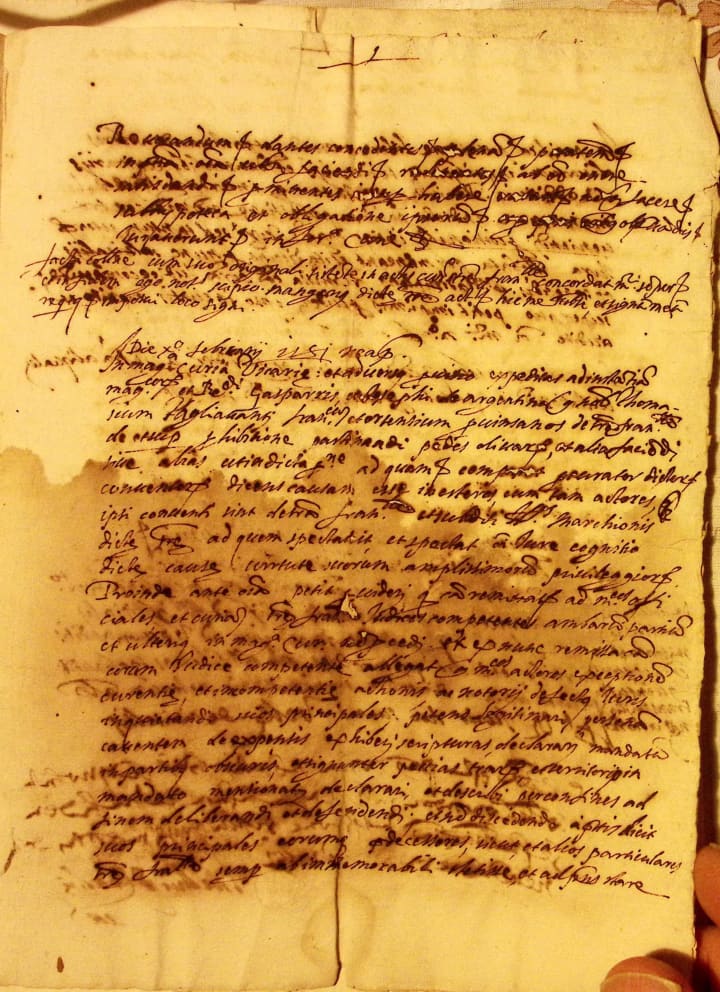

When taking on a research with this much breadth, it is inevitable that there is no room for many fascinating individuals. As hard as I tried, I could not get Giovan Bernardino Bonifacio into the pieces. Maybe as I revisit in the future I can sneak him in. He was the son of Roberto Bonifacio, the owner of Oria and Francavilla at the times of the Italian wars, while he reigned over Francavilla for a while after the French were finally sent packing. Though Roberto was a fascinating figure of this period, the person that attracts my attention most is Giovan Bernardino Bonifacio, a humanist thinker and editor who was exiled for his interest in the northern European protestant ideas of the time, which became most inconvenient as the Counter Reformation was hitting its stride and the Inquisition was trying to gain a foothold in Southern Italy, though uninvited and unwelcomed by the people of Naples. Giovan Bernardino translated and printed Lucretius’s De Rarum Natura in Florence in 1580, and also the work of the great local humanist known as Galateo. He ended up in a place as different as could be found from his native Terra d’Otranto. Chased away in Catholic lands, he finally rested during his old age in Danzig, where he opened a library.
His self-dictated epigraph stated in Latin: “ossia diu jacta nimis terraque, marique hic requiem errorum denique repperiunt “, which roughly translates to: “The bones thrown for too long by the earth and the seas, find here at last, the respite from their errors”. The last message of a wonderer of mind and body; I like it.




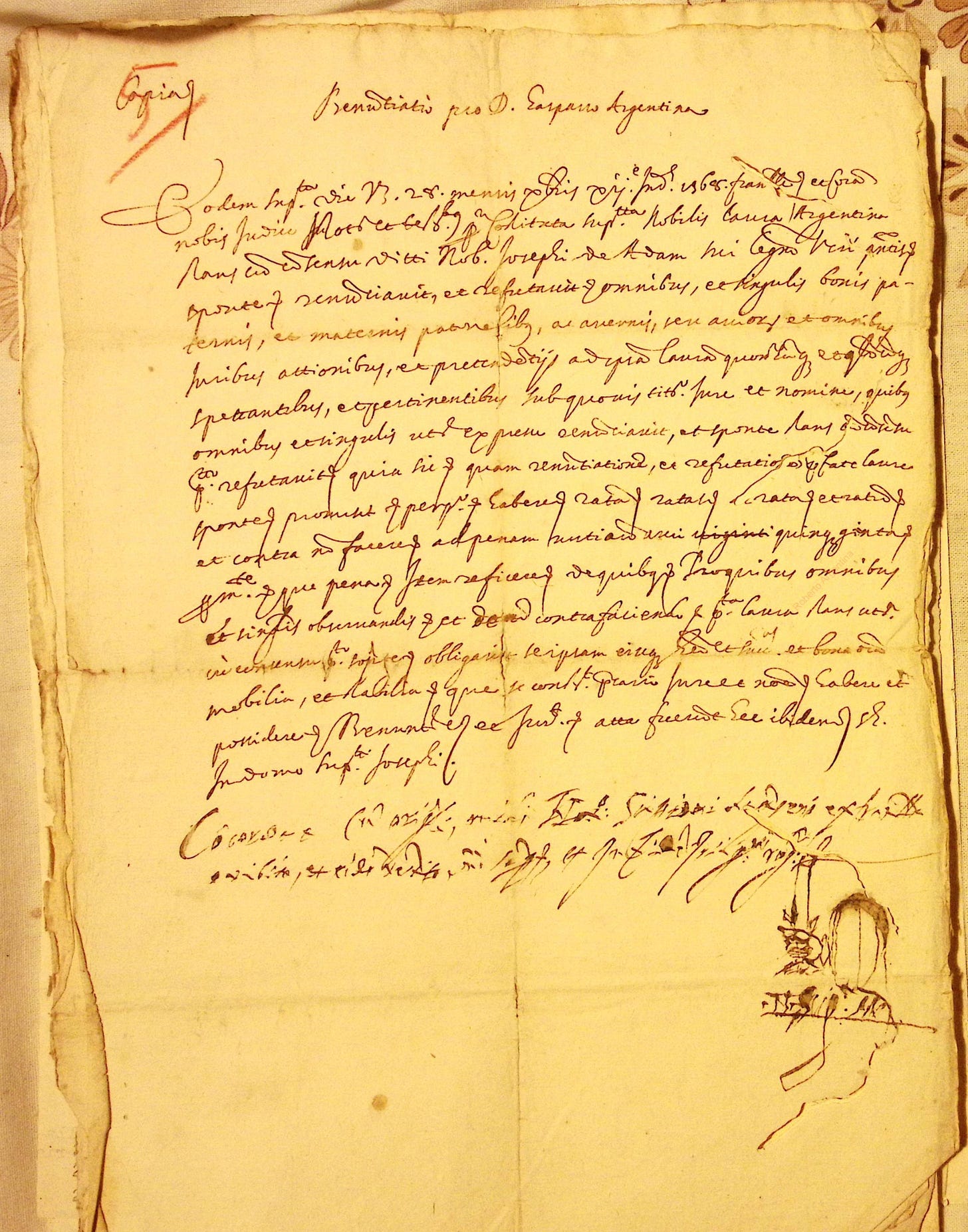
These entries continue to promote my interest, curiosity, and appreciation for the sharing.